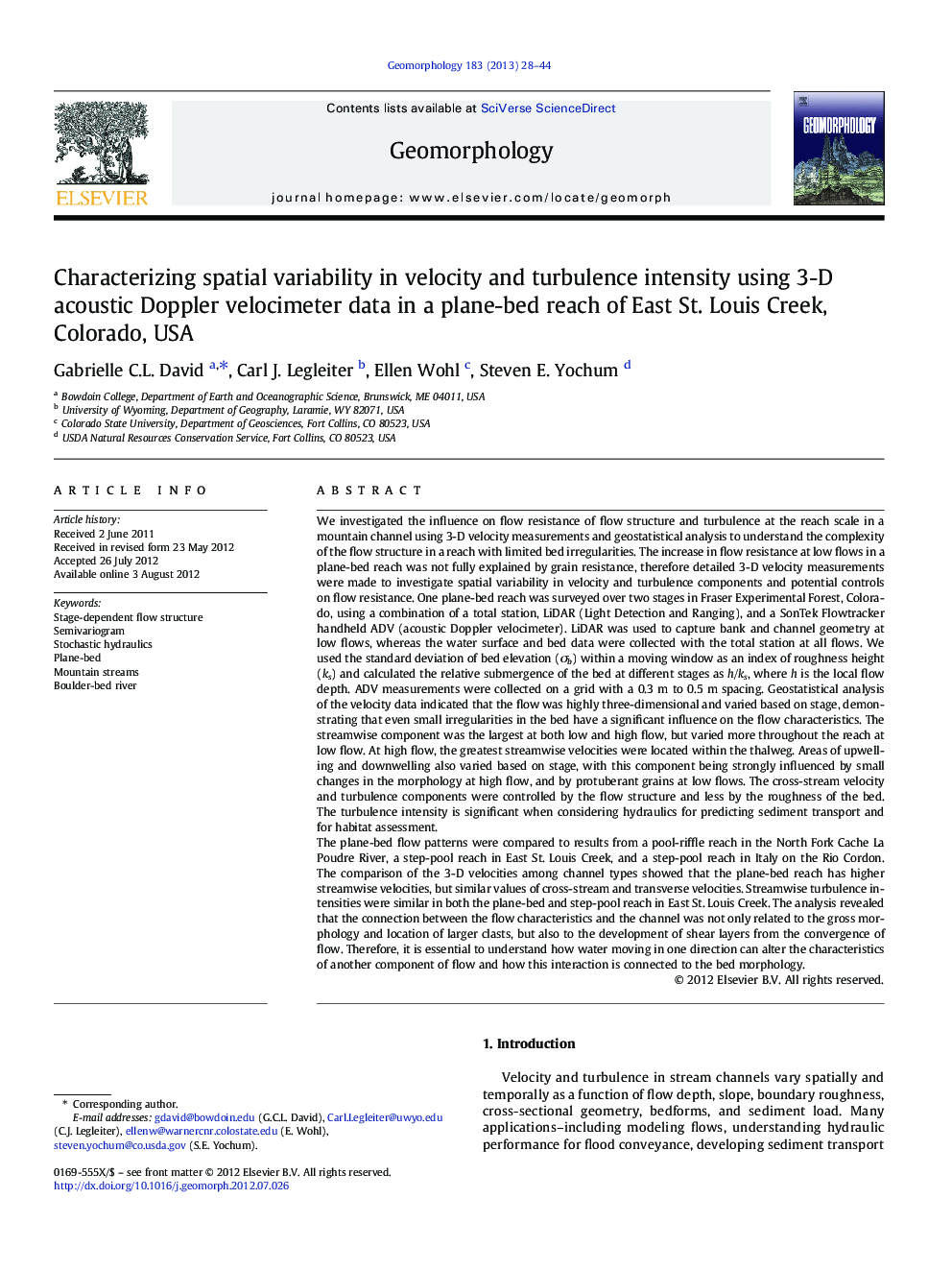| کد مقاله | کد نشریه | سال انتشار | مقاله انگلیسی | نسخه تمام متن |
|---|---|---|---|---|
| 4684971 | 1635466 | 2013 | 17 صفحه PDF | دانلود رایگان |

We investigated the influence on flow resistance of flow structure and turbulence at the reach scale in a mountain channel using 3-D velocity measurements and geostatistical analysis to understand the complexity of the flow structure in a reach with limited bed irregularities. The increase in flow resistance at low flows in a plane-bed reach was not fully explained by grain resistance, therefore detailed 3-D velocity measurements were made to investigate spatial variability in velocity and turbulence components and potential controls on flow resistance. One plane-bed reach was surveyed over two stages in Fraser Experimental Forest, Colorado, using a combination of a total station, LiDAR (Light Detection and Ranging), and a SonTek Flowtracker handheld ADV (acoustic Doppler velocimeter). LiDAR was used to capture bank and channel geometry at low flows, whereas the water surface and bed data were collected with the total station at all flows. We used the standard deviation of bed elevation (σb) within a moving window as an index of roughness height (ks) and calculated the relative submergence of the bed at different stages as h/ks, where h is the local flow depth. ADV measurements were collected on a grid with a 0.3 m to 0.5 m spacing. Geostatistical analysis of the velocity data indicated that the flow was highly three-dimensional and varied based on stage, demonstrating that even small irregularities in the bed have a significant influence on the flow characteristics. The streamwise component was the largest at both low and high flow, but varied more throughout the reach at low flow. At high flow, the greatest streamwise velocities were located within the thalweg. Areas of upwelling and downwelling also varied based on stage, with this component being strongly influenced by small changes in the morphology at high flow, and by protuberant grains at low flows. The cross-stream velocity and turbulence components were controlled by the flow structure and less by the roughness of the bed. The turbulence intensity is significant when considering hydraulics for predicting sediment transport and for habitat assessment.The plane-bed flow patterns were compared to results from a pool-riffle reach in the North Fork Cache La Poudre River, a step-pool reach in East St. Louis Creek, and a step-pool reach in Italy on the Rio Cordon. The comparison of the 3-D velocities among channel types showed that the plane-bed reach has higher streamwise velocities, but similar values of cross-stream and transverse velocities. Streamwise turbulence intensities were similar in both the plane-bed and step-pool reach in East St. Louis Creek. The analysis revealed that the connection between the flow characteristics and the channel was not only related to the gross morphology and location of larger clasts, but also to the development of shear layers from the convergence of flow. Therefore, it is essential to understand how water moving in one direction can alter the characteristics of another component of flow and how this interaction is connected to the bed morphology.
Journal: Geomorphology - Volume 183, 1 February 2013, Pages 28–44